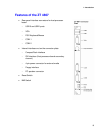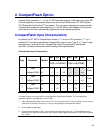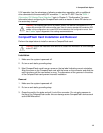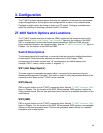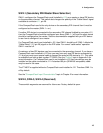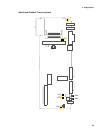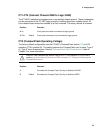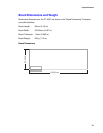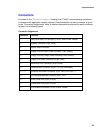3. Configuration
SW4-1 (Secondary IDE Master/Slave Selection)
SW4-1 configures the CompactFlash card (installed in J12) as a master or slave IDE device
on the secondary channel. This switch also changes the polarity of the “Cable Select” signal
available at connector
J11, pin 28.
If the CompactFlash card is the only device on the secondary IDE channel then it must be
configured as the master (SW4-1 = on).
If another IDE device is connected to the secondary IDE channel (cabled to connector J11)
then the CompactFlash should be configured as a slave (SW4-1 = off) and the other device
should be configured as the master. See the documentation supplied with your IDE device
to see how to configure it as a master.
If a CompactFlash card is not installed in J12, then SW4-1 should be off. SW4-1 affects the
“Cable Select” (J11 pin 28) signal on the IDE cable. For normal “cable select” operation
SW4-1 must be off.
A maximum of two IDE devices may be connected to the secondary channel. If you have a
CompactFlash card installed in J12 then you may have only one IDE device connected to
J11 and you must use a special cable to connect the external IDE device to J11. This cable
is available from Intel as part number ZT 90250. See the “
Cables” topic in Appendix A for
more information. If a CompactFlash card is not installed in J12 then two devices may be
installed on the cable connected to J11. A standard 80-pin (UDMA-66 compatible) cable
may be used in this case.
The ZT 4807 is supplied without a CompactFlash card installed in J12. Therefore SW4-1 is
off by default.
See the “
CompactFlash Input Characteristics” topic in Chapter 2 for more information.
SW4-2, SW4-3, SW4-4 (Reserved)
These switch segments are reserved for future use. Factory default is open.
16




